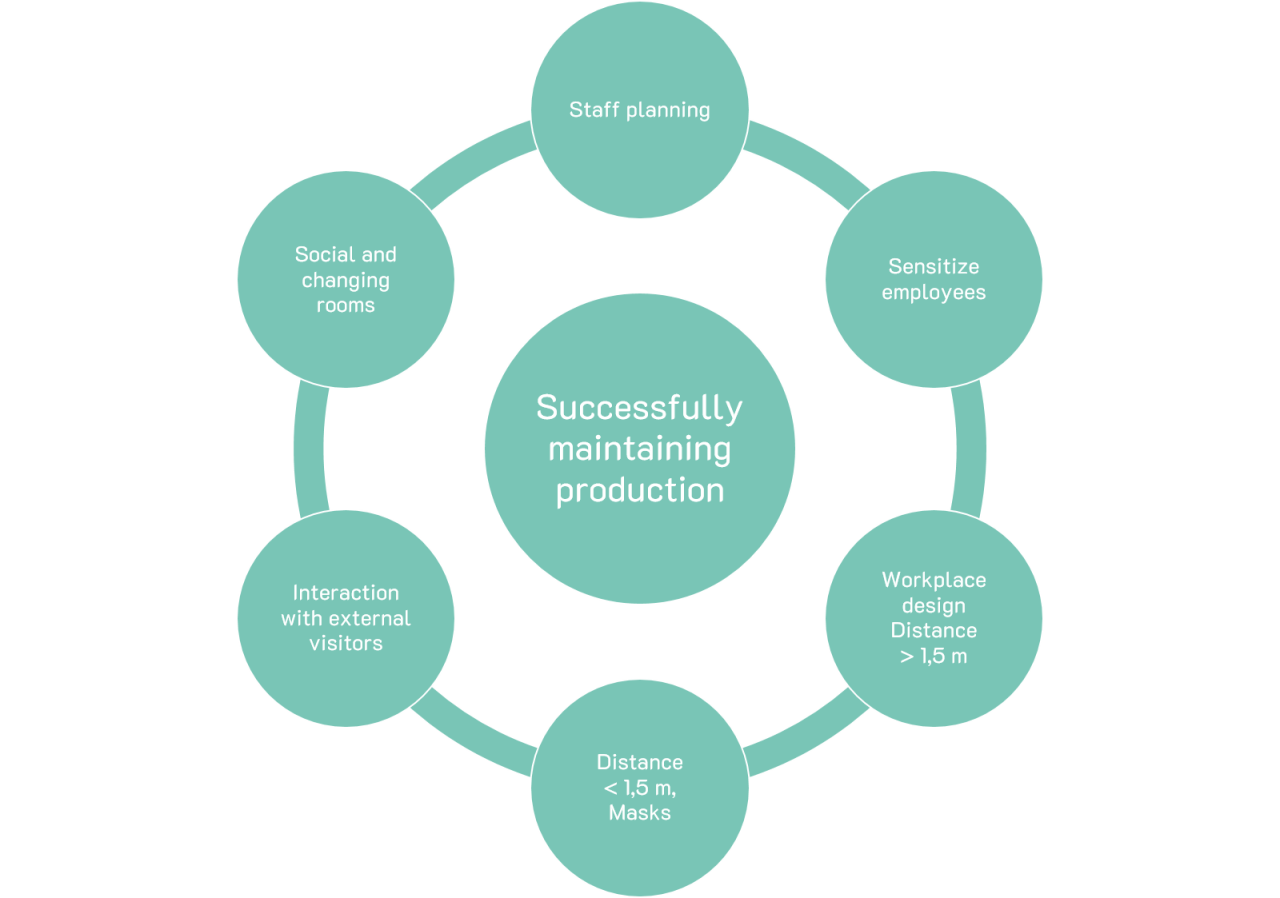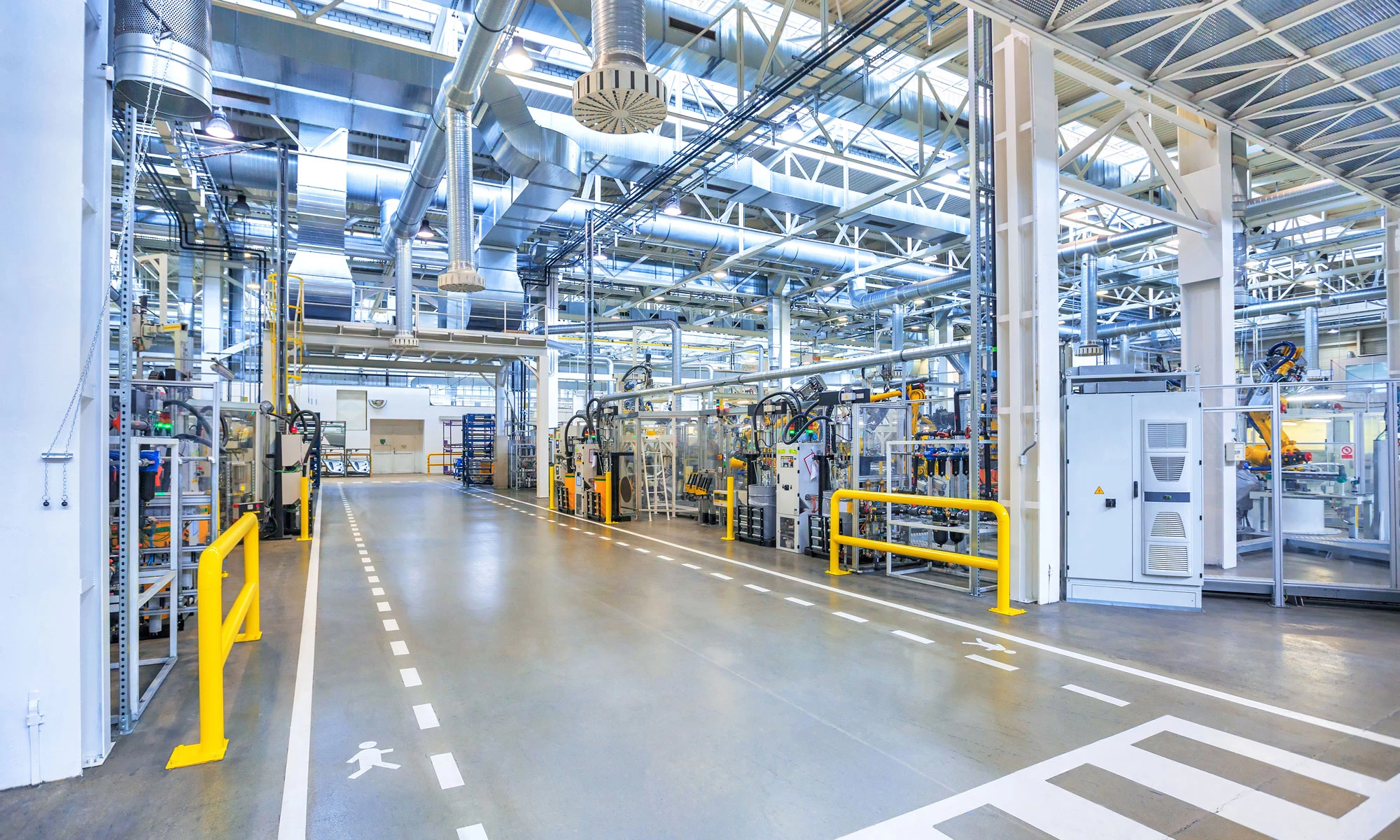Questions arising now
As Munich Consulting Group, we monitor current developments from two perspectives. On the one hand: Which measures and regulations affect us and our employees directly or indirectly? Where do we have room for manoeuvre, and what steps do we need to take to overcome the crisis together with our colleagues and clients?
On the other hand, we are monitoring the developments in medium-sized manufacturing companies and the effects of current events on medium-sized manufacturing companies. In doing so, one question always comes to mind: What happens after a company has obtained a small financial respite by applying for emergency aid and short-time work benefits? What short and medium-term measures are being taken to protect employees and safeguard the company?
Since it is currently impossible to predict how long and to what extent the restrictions will affect the economic strength of a company, they will have to work with the restrictions. Now it is important to maintain their own value creation at a stable level in order to survive the crisis and, ideally, to learn from it.
At this point, we at Munich Consulting Group would like to provide assistance in determining which measures can be taken to protect medium-sized manufacturing companies. These measures not only safeguard the greatest good – the health of employees – but also the company's ability to act economically. Based on the SARS-CoV-2 occupational safety standard of the Federal Ministry of Labour and Social Affairs of 16 April 2020, this article takes up the elementary points of the occupational safety standard and presents them in measures of practical relevance for small and medium-sized manufacturing companies.
Sensitization of employees
The effectiveness of measures within the company stands and falls with the commitment and discipline of all employees. For this reason it is elementary and indispensable to implement these to sensitize them.
Furthermore, the handling of the measures should become a matter of course, which is achieved when everyone is confronted with them regularly. For this purpose, it is recommended to display general hygiene regulations and general (defined) rules of conduct.
At this point, companies should work with eye-catchers and become creative, which can result in “The 5 Golden Rules” or “The 10 Commandments against Corona”, for example. Depending on the size of the company, it is recommended to name an official contact person who is available for questions, problems, suggestions or the like.
Workplace design and contact with external persons
The goal of every measure must be the health of its own employees. For this reason, workplace design is very important. It must be ensured that the minimum distance of 1.5 metres can be maintained. In practice, however, it is not possible to maintain this distance in many industries (e. g. assembly work). In these cases, the wearing of mouth-nose protection masks is indispensable. If workplaces are used by several colleagues (due to shift work or similar), it is strongly recommended to clean the workplace at the end of your own work. No disinfectant has to be used for this, the use of household all-purpose cleaners is sufficient at this point. This serves to protect your own health and the health of your family and colleagues.
At central points of contact in the production (e. g. planning board, JF boards, tool dispenser …) there will inevitably be large gatherings of people. Here the company must rely on the caution, reason and consideration of its own employees. However, measures can be taken to encourage employees to behave appropriately. Visual cues such as floor markings at the central contact points are helpful in this respect, in order to visually support the observance of safety distances in queues or information areas.
The interfaces to external persons (delivery of goods / collection of goods) must be considered separately at the current time. As there are no clear structures for the delivery and collection of goods, especially in small and medium-sized companies, concepts for the protection of employees are even more important. At this point, neutral places where external persons must be present should be defined. In the event that external persons enter the company premises, the company should document the relevant persons by name. The transparency thus gained makes it easier to trace chains of infection in the event of illness.
Regulation in social rooms and personnel planning
In addition, clear rules must be established for social rooms and changing areas. Especially during breaks there is a high risk of (unknowingly) falling below the minimum distance. In addition to organisational measures, such as the equalisation of break times, measures can be taken to encourage employees to keep the minimum distance. By removing chairs from the break room and replacing them with new seating that takes the safety distance into account, the employees are reminded of the necessity of observing the measures and it is also possible to change the form of the gathering. The use of the changing rooms (especially the showers) should be avoided, if possible. This means that the employees should already appear at the company in work clothes. If this is not possible due to extreme strain or dirt, it is strongly recommended that appropriate measures (e. g. timing of working hours) be taken to ensure a safe distance in the changing areas.
The biggest lever for protecting the health of your own employees, and thus for maintaining productivity, is the organisation of your employees (personnel planning). Without targeted personnel planning, the measures described above may not be effective. Below is an overview of basic criteria for (currently) sensible personnel planning. It should be noted here that the measures must be applied individually in each company.
- Introduction of shift work / timed start of work
- No personal shift handover (use virtual alternatives)
- Equalization of the pauses
- Form and maintain working groups
By applying the above measures for personnel planning, and the resulting distribution of employees over different times, productivity can be combined with the applicable protective measures. The equalization of breaks offers all employees the possibility to use the social rooms, in which, by keeping the minimum distance, significantly fewer people can be accommodated than in the usual occupation.
By forming constant working groups or constant shifts, it can be ensured that in the event of a corona case, only the working group (or shift) concerned must be quarantined. This ensures that the company's operations are maintained even in the event of a corona case.
The most important facts at the end
In summary, it can be said that medium-sized manufacturing companies are facing a major challenge. By taking the measures mentioned in this article, the company can face and master this challenge. The implementation of the above summarized measures by the Federal Ministry of Labor and Social Affairs will both protect the health of its own employees and thus ensure the continued existence of the company.
The most important thing at the end: Stay healthy.


